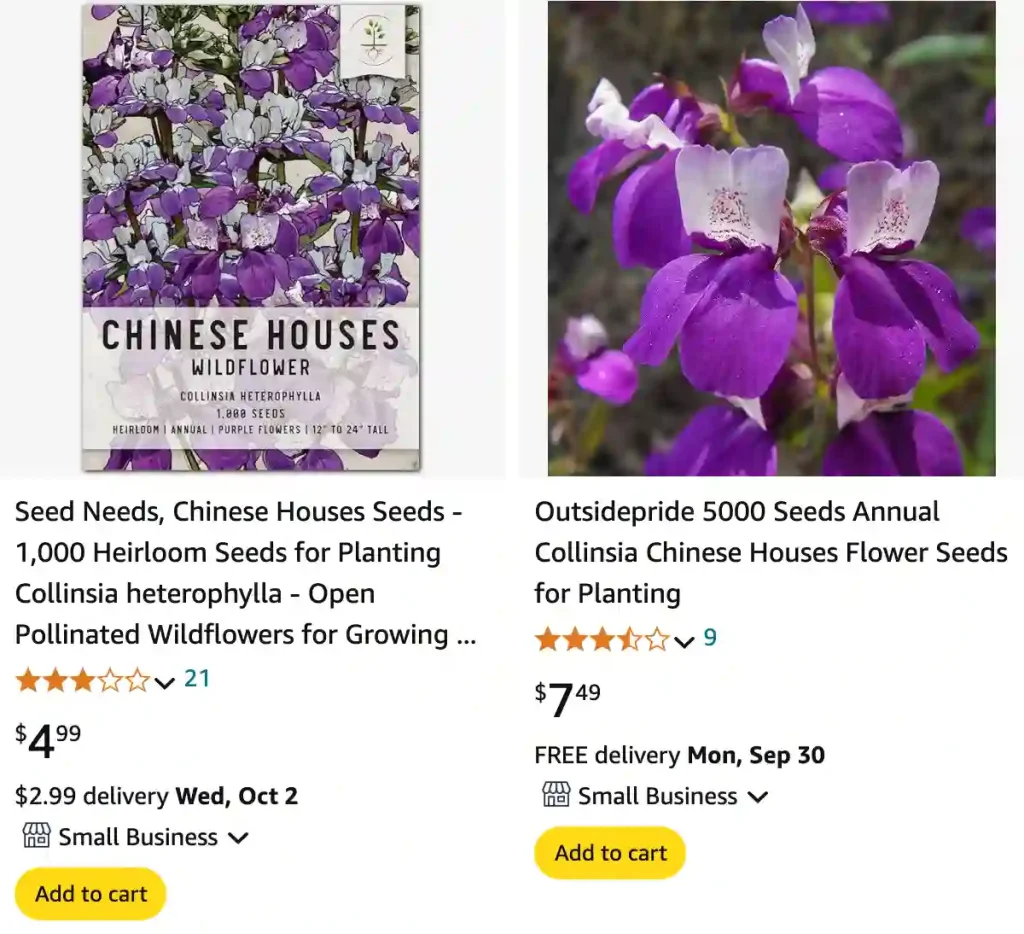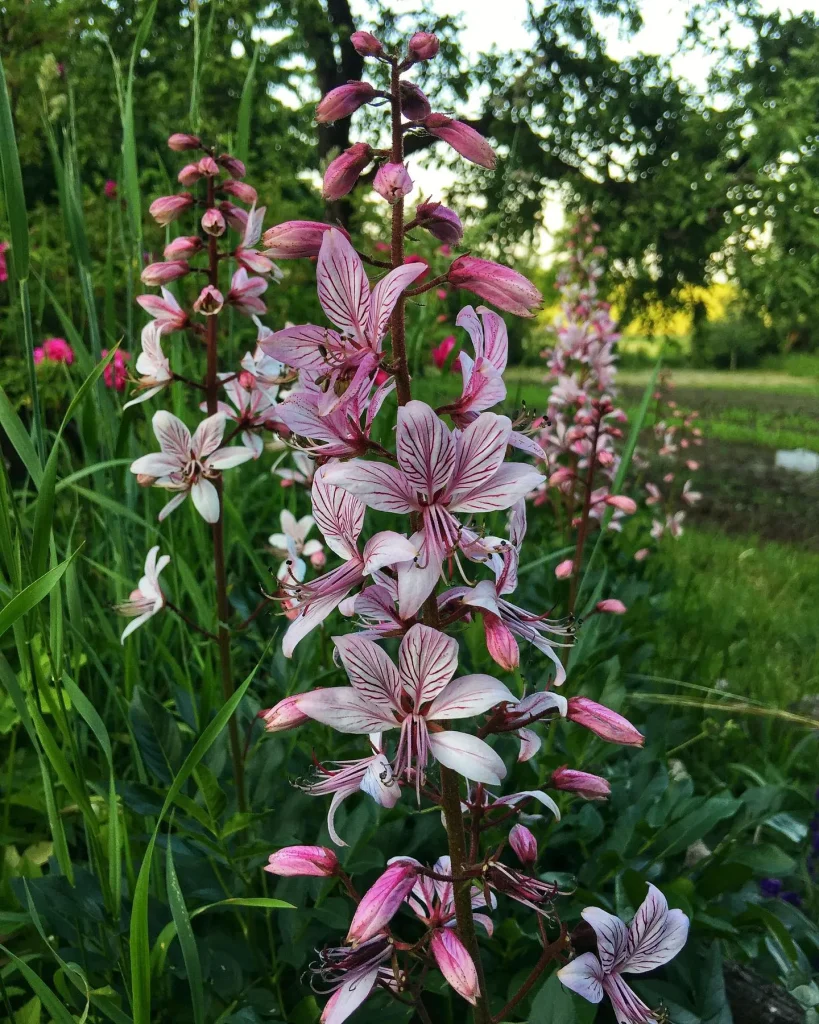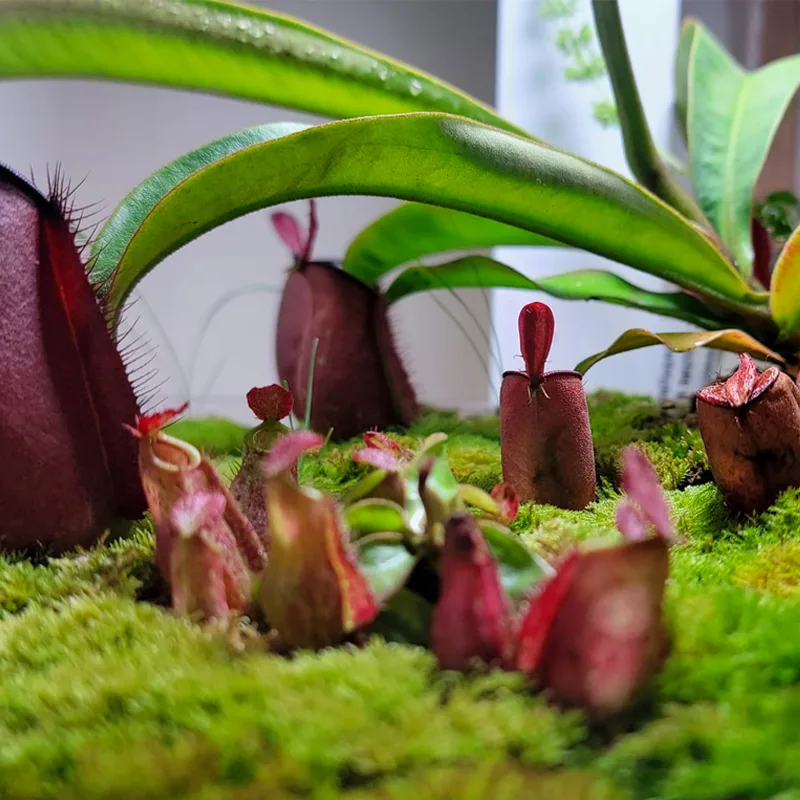
FAQs About Collinsia Heterophylla
When I first encountered Collinsia Heterophylla, also known as Chinese Houses, I was captivated by its unique appearance and charm. This beautiful plant can bring a splash of color to any garden or home. In this article, I’ll answer some frequently asked questions about how to grow Collinsia Heterophylla, care tips, propagation methods, and more.
What is Collinsia Heterophylla?
Collinsia Heterophylla is a perennial herb belong to the Plantaginaceae family, native to North America, particularly thriving in California. It’s characterized by its delicate, two-lipped flowers that can be blue, purple, or white. The foliage is equally attractive, with slender, green leaves that enhance its visual appeal. I’ve found that its unique shape and vibrant flowers make it an excellent choice for both gardens and containers.
Plant Family: 106 Genera in Plantaginaceae
How to Grow Collinsia Heterophylla?
Growing Collinsia Heterophylla is relatively straightforward. I typically start with seeds, as this method has worked well for me. Here’s how I do it:
- Timing: I usually sow the seeds in early spring after the last frost. This timing helps ensure optimal growth.
- Location: Collinsia prefers full sun to partial shade. I’ve had success placing them in areas where they get morning sun but are shaded in the afternoon.
- Soil: Well-draining soil is crucial. I mix garden soil with compost to improve drainage and provide nutrients.
- Watering: I keep the soil moderately moist, avoiding waterlogging. Regular watering is essential, especially during dry spells.
- Spacing: When planting, I make sure to space them about 12 to 18 inches apart to allow for their spread.
How to Care for Collinsia Heterophylla?
Caring for Collinsia Heterophylla involves a few essential practices:
- Fertilization: I fertilize with a balanced fertilizer during the growing season to promote healthy blooms.
- Pruning: Deadheading spent flowers encourages more blooms. I find that trimming back any leggy growth also helps keep the plant looking tidy.
- Pest Control: Occasionally, I encounter pests like aphids. A gentle spray of water or insecticidal soap usually does the trick.
How to Propagate Collinsia Heterophylla?
Propagation can be done easily through seeds. Here’s how I propagate:
- Collect Seeds: After flowering, I collect seeds from the spent flowers.
- Sowing: I sow the seeds in a prepared bed or container, lightly covering them with soil.
- Watering: Keeping the soil moist helps the seeds germinate.
Alternatively, I’ve tried dividing established plants in early spring, which has also proven successful.
What to Plant with Collinsia Heterophylla?
Collinsia pairs beautifully with other flowering plants. In my garden, I like to plant it alongside:
- California Poppies: Their bright orange flowers contrast nicely with Collinsia’s softer tones.
- Lupines: The tall spikes of Lupines add height and drama to the arrangement.
- Salvia: The vibrant blooms of Salvia attract pollinators and create a colorful display.
Can You Grow Collinsia Heterophylla Indoors?
While I primarily grow Collinsia outdoors, it’s possible to cultivate it indoors in a sunny location. I use pots with good drainage and place them near a window where they receive plenty of light. Regular watering is key to keeping the indoor plants healthy.
Is Collinsia Heterophylla Toxic?
One of the best aspects of Collinsia Heterophylla is that it’s non-toxic to pets and humans. I’ve felt secure having this plant in my garden, knowing that it poses no harm to my curious pets or children.
What Are the Benefits of Growing Collinsia Heterophylla?
Growing Collinsia offers numerous benefits:
- Attracts Pollinators: Its lovely flowers attract bees and butterflies, enhancing biodiversity in my garden.
- Erosion Control: The root system helps prevent soil erosion, particularly in sandy areas.
- Low Maintenance: Once established, Collinsia requires minimal care, making it perfect for busy gardeners.
Common Problems with Collinsia Heterophylla
While Collinsia is generally resilient, I’ve encountered a few issues:
- Powdery Mildew: This can occur in humid conditions. I’ve found that ensuring good air circulation helps prevent it.
- Overwatering: Be cautious with watering, as too much can lead to root rot.
Comparing Collinsia Heterophylla to Similar Plants
Collinsia Heterophylla is often confused with other flowering plants like Linaria and Nemophila. Here’s how they differ:
- Linaria: This plant has a similar growth habit but features a different flower shape. I find Linaria’s flowers are more tubular, while Collinsia’s are broader.
- Nemophila: Although they both have charming flowers, Nemophila tends to have rounder leaves and is usually a bit larger.
In conclusion, Collinsia Heterophylla is a delightful addition to any garden. With its stunning flowers and relatively easy care requirements, it’s a plant I highly recommend for both novice and experienced gardeners alike. Whether you’re growing it in a container or your garden bed, it’s sure to bring joy and beauty to your space.
If i die, water my plants!



